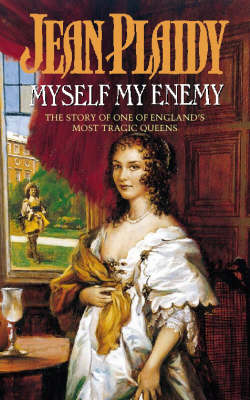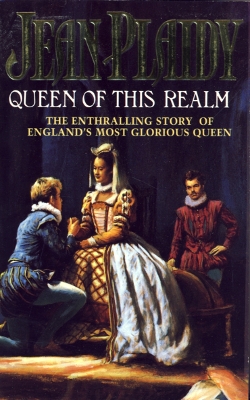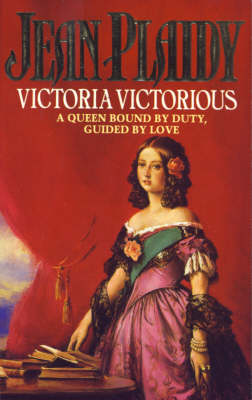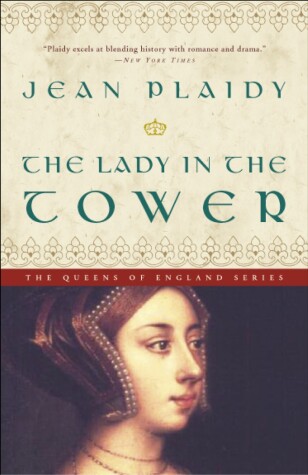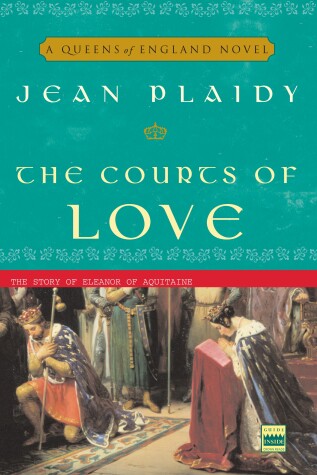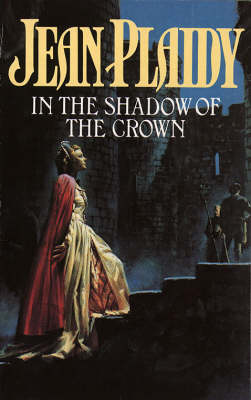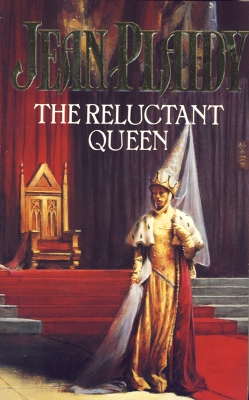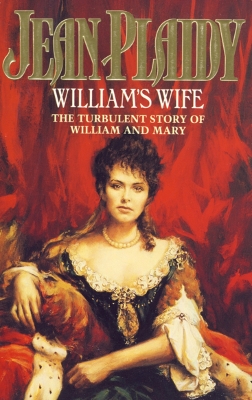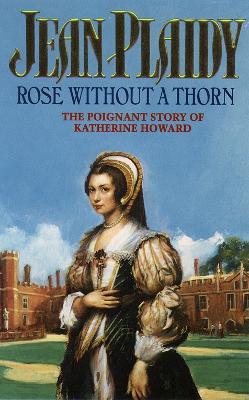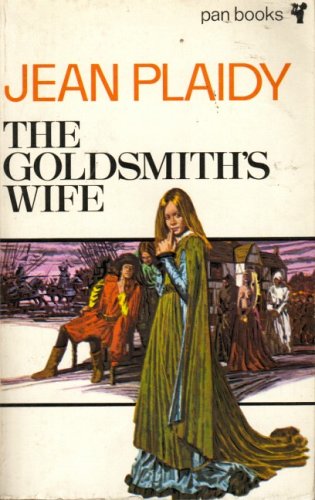Queens of England
11 primary works • 12 total works
Book 1
One of the country's most widely read novelists - the first volume in the Queens of England series.
Despite the dangers of practicing her faith in the staunchly Protestant England, pretty Queen Henrietta Maria refuses to cast aside her Catholicism, so she finds little favour among the people. She is...
Read moreOne of the country's most widely read novelists - the first volume in the Queens of England series.
Despite the dangers of practicing her faith in the staunchly Protestant England, pretty Queen Henrietta Maria refuses to cast aside her Catholicism, so she finds little favour among the people. She is impetuous and loving, fond of fashionable clothes and gossip, and Charles, a family man of principle and integrity, is entirely devoted to her.
But their happy if controversial marriage is soon under threat when Henrietta is renounced as a puppet of Rome and charged with leading Protestant England back to Rome.
Soon her enemies swarm and the spies in her household prove too much. Only her loyalty and love for Charles can hope to keep him from the road to regicide.
Book 2
But in these pages, in her own voice, Elizabeth also recounts the emotional turmoil of her life: the loneliness of power; the heartbreak of her lifelong love affair with Robert Dudley, whom she could never marry; and the terrible guilt of ordering the execution of her cousin, Mary, Queen of Scots. In this unforgettable novel, Elizabeth emerges as one of the most fascinating and controversial women in history, and as England’s greatest monarch.
Book 3
At birth, Princess Victoria was fourth in line for the throne of England, the often-overlooked daughter of a prince who died shortly after her birth. She and her mother...Read more
At birth, Princess Victoria was fourth in line for the throne of England, the often-overlooked daughter of a prince who died shortly after her birth. She and her mother lived in genteel poverty for most of her childhood, exiled from court because of her mother’s dislike of her uncles, George IV and William IV. A strong, willful child, Victoria was determined not to be stifled by her powerful uncles or her unpopular, controlling mother. Then one morning, at the age of eighteen, Princess Victoria awoke to the news of her uncle William’s death. The almost-forgotten princess was now Queen of England. Even better, she was finally free of her mother’s iron hand and her uncles’ manipulations. Her first act as queen was to demand that she be given a room—and a bed—of her own.
Victoria’s marriage to her German cousin, Prince Albert, was a blissfully happy one that produced nine children. Albert was her constant companion and one of her most trusted advisors. Victoria’s grief after Prince Albert’s untimely death was so shattering that for the rest of her life—nearly forty years—she dressed only in black. She survived several assassination attempts, and during her reign England’s empire expanded around the globe until it touched every continent in the world.
Derided as a mere “girl queen” at her coronation, by the end of her sixty-four-year reign, Victoria embodied the glory of the British Empire. In this novel, written as a “memoir” by Victoria herself, she emerges as truthful, sentimental, and essentially human—both a lovable woman and a great queen.
Book 4
legendary Jean Plaidy.
Young Anne Boleyn was not beautiful but she was irresistible, capturing the hearts of kings and commoners alike. Daughter of an ambitious country lord, Anne was sent...Read more
legendary Jean Plaidy.
Young Anne Boleyn was not beautiful but she was irresistible, capturing the hearts of kings and commoners alike. Daughter of an ambitious country lord, Anne was sent to France to learn sophistication, and then to court to marry well and raise the family’s fortunes. She soon surpassed even their greatest expectations. Although his queen was loving and loyal, King Henry VIII swore he would put her aside and make Anne his wife. And so he did, though the divorce would tear apart the English church and inflict religious turmoil and bloodshed on his people for generations to come.
Loathed by the English people, who called her “the King’s Great Whore,” Anne Boleyn was soon caught in the trap of her own ambition. Political rivals surrounded her at court and, when she failed to produce a much-desired male heir, they closed in, preying on the king’s well-known insecurity and volatile temper. Wrongfully accused of adultery and incest, Anne found herself imprisoned in the Tower of London, where she was at the mercy of her husband and of her enemies.
Book 5
Eleanor of Aquitaine was revered for her superior intellect, extraordinary courage, and fierce loyalty. She was equally famous for her turbulent relationships, which included marriages to the kings of both France and England.
As a child, Eleanor reveled in her beloved grandfather’s Courts of Love, where troubadours sang of romantic devotion and passion filled the air. In 1137, at the age of fifteen, Eleanor became Duchess of Aquitaine, the richest province in Europe. A union with Louis VII allowed her to ascend the French throne, yet he was a tepid and possessive man and no match for a young woman raised in the Courts of Love. When Eleanor met the magnetic Henry II, the first Plantagenet King of England, their stormy pairing set great change in motion—and produced many sons and daughters, two of whom would one day reign in their own right.
In this majestic and sweeping story, set against a backdrop of medieval politics, intrigue, and strife, Jean Plaidy weaves a tapestry of love, passion, betrayal, and heartbreak—and reveals the life of a most remarkable woman whose iron will and political savvy enabled her to hold her own against the most powerful men of her time.
Book 6
Book 7
With Joan of Arc inciting the French to overthrow English rule, Katherine’s loyalty to her adopted homeland of England became a matter of intense suspicion. Katherine had brought her dowry and borne her heir; what use was she to England? It was decreed that she would live out her remaining years alone, far from the seat of power. But no one, not even Katherine herself, could have anticipated that she would fall in love with and secretly marry one of her guardians, Owen Tudor—or that a generation later, their grandson would become the first king of the great Tudor dynasty.
Book 8
Book 9
The ninth novel in the beloved Queens of England series, The Merry Monarch’s Wife brings Catherine of Braganza to life and plunges readers into the tumultuous world of Restoration England.
Book 10
There was no indulgent father to shelter her; and it was clear that the cold man she had married had little interest in her beyond the crown which she could bring him. There was only Anne Trelawny and the women she had brought with her from England to comfort her. Intrigue and the discovery of Elizabeth Villiers' position at the Court of The Hague shocked her so deeply that she was stung into retaliation but soon realised that she was no match for the wily Elizabeth. Trouble in England meant that her father's throne was in jeopardy. Conflict inevitably arose and Mary was at the heart of it between the two protagonists, her father and her husband. The crown of England was the prize and Mary had to make a choice. She was James' daughter, but first of all she was William's wife.
Book 11
royalty, passion, and innocence lost.
Born into an impoverished branch of the noble Howard family, young Katherine is plucked from her home to live with her grandmother, the Duchess of Norfolk....Read more
royalty, passion, and innocence lost.
Born into an impoverished branch of the noble Howard family, young Katherine is plucked from her home to live with her grandmother, the Duchess of Norfolk. The innocent girl quickly learns that her grandmother’s puritanism is not shared by Katherine’s free-spirited cousins, with whom she lives. Beautiful and impressionable, Katherine becomes involved in two ill-fated love affairs before her sixteenth birthday. Like her cousin Anne Boleyn, she leaves her grandmother’s home to become a lady-in-waiting at the court of Henry VIII. The royal palaces are exciting to a young girl from the country, and Katherine finds that her duties there allow her to be near her handsome cousin, Thomas Culpepper, whom she has loved since childhood.
But when Katherine catches the eye of the aging and unhappily married king, she is forced to abandon her plans for a life with Thomas and marry King Henry. Overwhelmed by the change in her fortunes, bewildered and flattered by the adoration of her husband, Katherine is dazzled by the royal life. But her bliss is short-lived as rumors of her wayward past come back to haunt her, and Katherine’s destiny takes another, deadly, turn.
The life of Jane Shore in Plaidy's thrilling Queen of England Series.
Eighteen year old Jane Shore's beauty is known around London. She is well-educated and intelligent, and when she catches the eye of a wealthy goldsmith her father sees in her an opportunity for an advantageous marriage. But the...
Read moreThe life of Jane Shore in Plaidy's thrilling Queen of England Series.
Eighteen year old Jane Shore's beauty is known around London. She is well-educated and intelligent, and when she catches the eye of a wealthy goldsmith her father sees in her an opportunity for an advantageous marriage. But the marriage is soon annulled and she becomes the favourite mistress of Edward IV.
Her compassion for London's poor brings her widespread popularity, and she uses her favour with the king to beg forgiveness for those who have angered him. When Edward suddenly dies, she seduces other men, namely Thomas Grey, 1st Marquess of Dorset and William Hastings, 1st Baron Hastings.
But when Hastings loses the new King's favour she is punished and imprisoned in Ludgate prison. There, away from the protection of her loves, she can only face the horrors of those she once protected. And pray for salvation.
